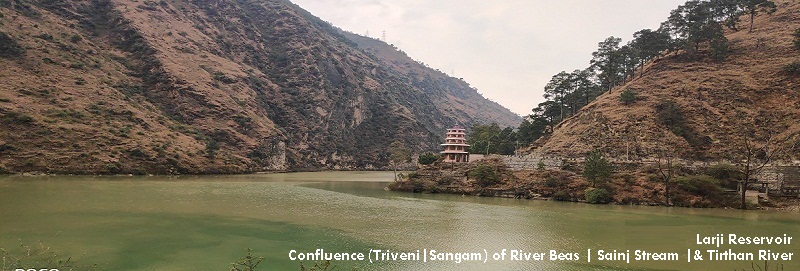Tirthan Valley | Great Himalayan National Park
Welcome To Tirthan Valley & Great Himalayan National Park.
The Valley, Known as the home to several Gods and Goddesses. Tirthan Valley is named after the River Tirthan Flowing through the valley. Having great attraction both for the Indian as well as foreign tourists due to its wilderness, landscapes, beautiful forests, wildlife & Culture.
Valley is famous for trout fishing in Tirthan river. Now after recognition of Great Himalayan National Park as world heritage site added another charm to the valley . The Tirthan Valley is in middle himalyan range and if one goes toward east, the peaks progressively keeps increasing in height . Tirthan Valley lies on the alternate route to Kullu from Shimla & Connected to the unexplored region of Himachal (Can be called as Hidden Himachal). The names of many places in this valley commemorate saints who came here to meditate in the great sanctuary of Himalayas.
Great Himalayan National Park is listed among the 32 world heritage sites in India. In June 2014, the UNESCO added the GHNP to the list of World Heritage Sites and grant the “exceptional natural beauty and conservation of biological diversity” status to it.
Great Himalayan National Park covers the area of 754.4 sq kms . It is the major source of water for the rural and urban centers of the region GHNP . GHNP includes the water source origins of glacial and snow melt rivers . The four major rivers of the area originating from park are Jiva Nala, Sainj river, Tirthan river and the north- westerly flowing Parvati River. Also it is the source of sustenance and livelihood for the local community. GHNP is home to several rare and threatened species including the western tragopan, chir pheasant, snow leopard, Himalayan musk deer, Asiatic black bear, Himalayan thar, blue sheep and many more. Some 25 threatened IUCN red-listed plant species are also present in park. Most of the Himalayan fauna has been given protection under Indian Wildlife (Protection) Act, 1972. Lets Explore The Valley.

Great Himalayan National Park
Great Himalayan National Park is listed among the 32 world heritage sites in India. In June 2014, the UNESCO added the GHNP to the list of World Heritage Sites and grant the “exceptional natural beauty and conservation of biological diversity” status to it.
GHNP covers the area of 754.4 sq kms . It is the major source of water for the rural and urban centers of the region GHNP . GHNP includes the water source origins of glacial and snow melt rivers . The four major rivers of the area originating from park are Jiva Nala, Sainj river , Tirthan river and the north- westerly flowing Parvati River. Also it is the source of sustenance and livelihood for the local community.
GHNP is home to several rare and threatened species including the western tragopan, chir pheasant, snow leopard, Himalayan musk deer, Asiatic black bear, Himalayan thar, blue sheep and many more. Some 25 threatened IUCN red-listed plant species are also present in park.
Most of the Himalayan fauna has been given protection under Indian Wildlife (Protection) Act, 1972.

Most of the places are untouched from outer world so you can enjoy pollution free air and crystal clear water freely flowing in Tirthan River & Sainj Stream of the valley.
The Local food is also delicious – one should not forgot to try Rajma Chawal (Red Kidney Beans With Rice), Siddu with Local Ghee, Linger Ki Sabji (Fiddleheads- Seasonal Vegetable), Gucchi (Himalayan Morel).
People in Valley are Polite & helpful. Its Simply A Hidden Treasure In Himalayas – Clean Air | Clean Water | Fresh Food.